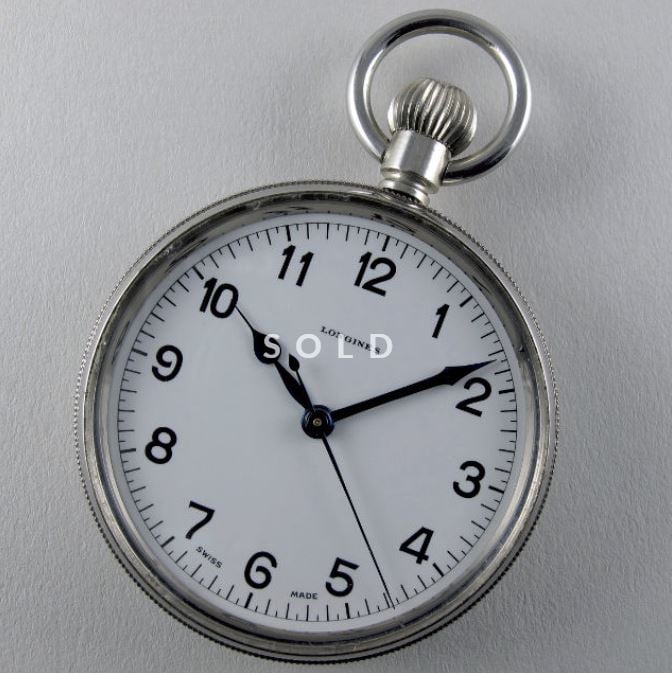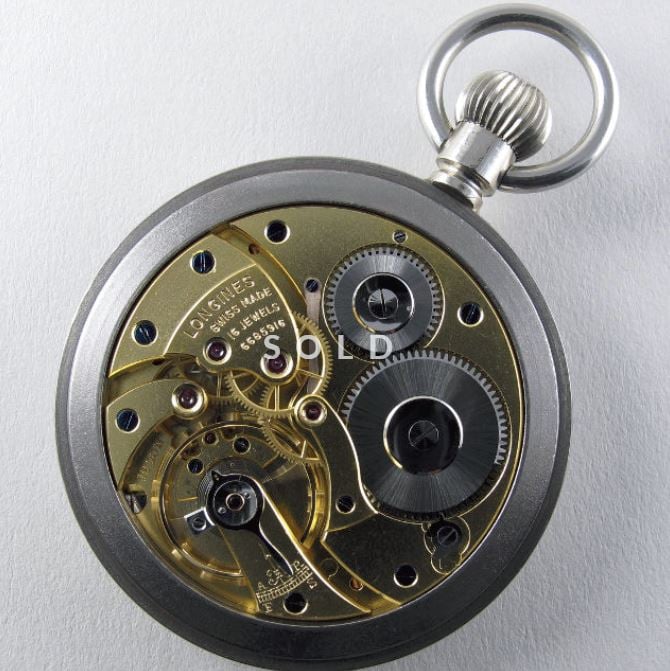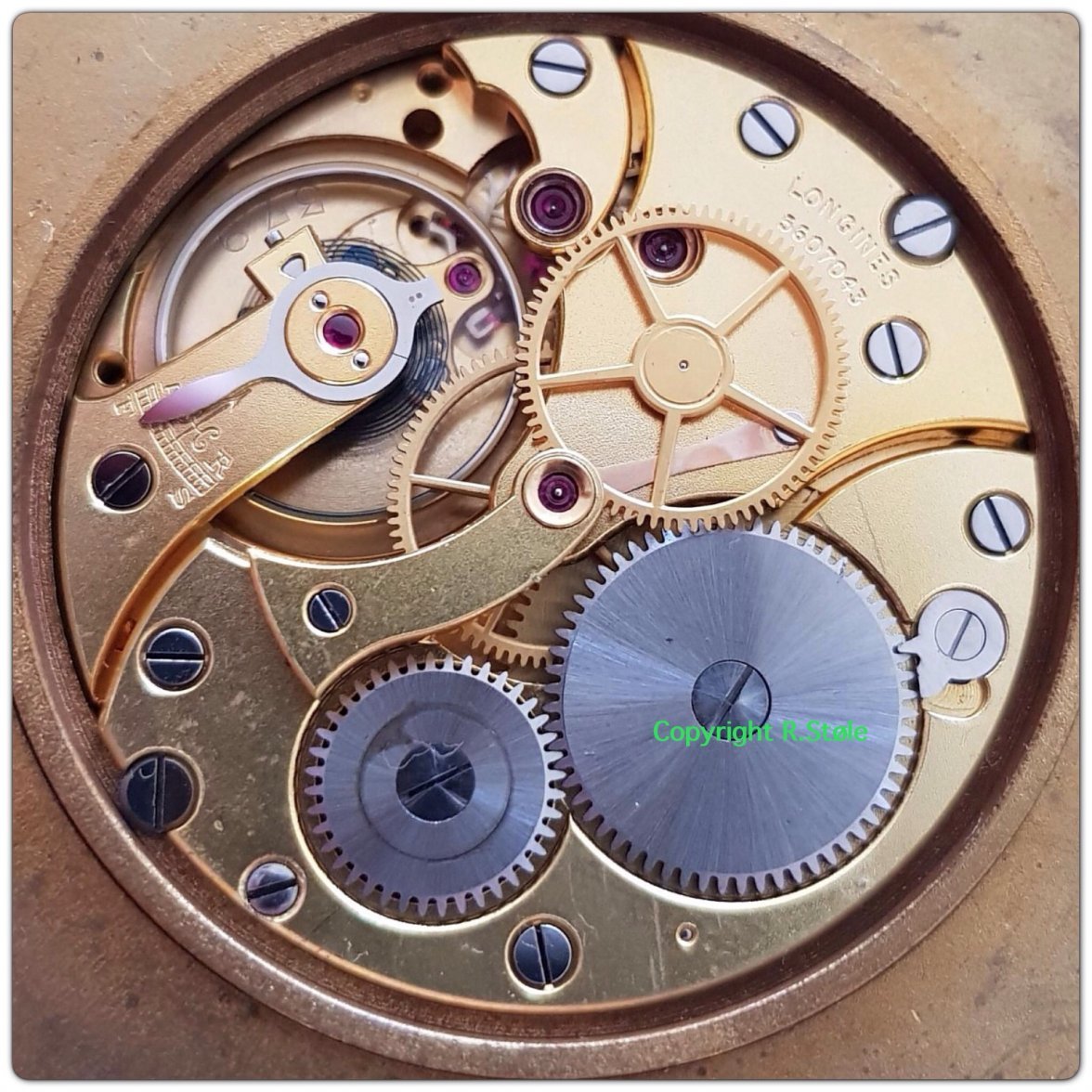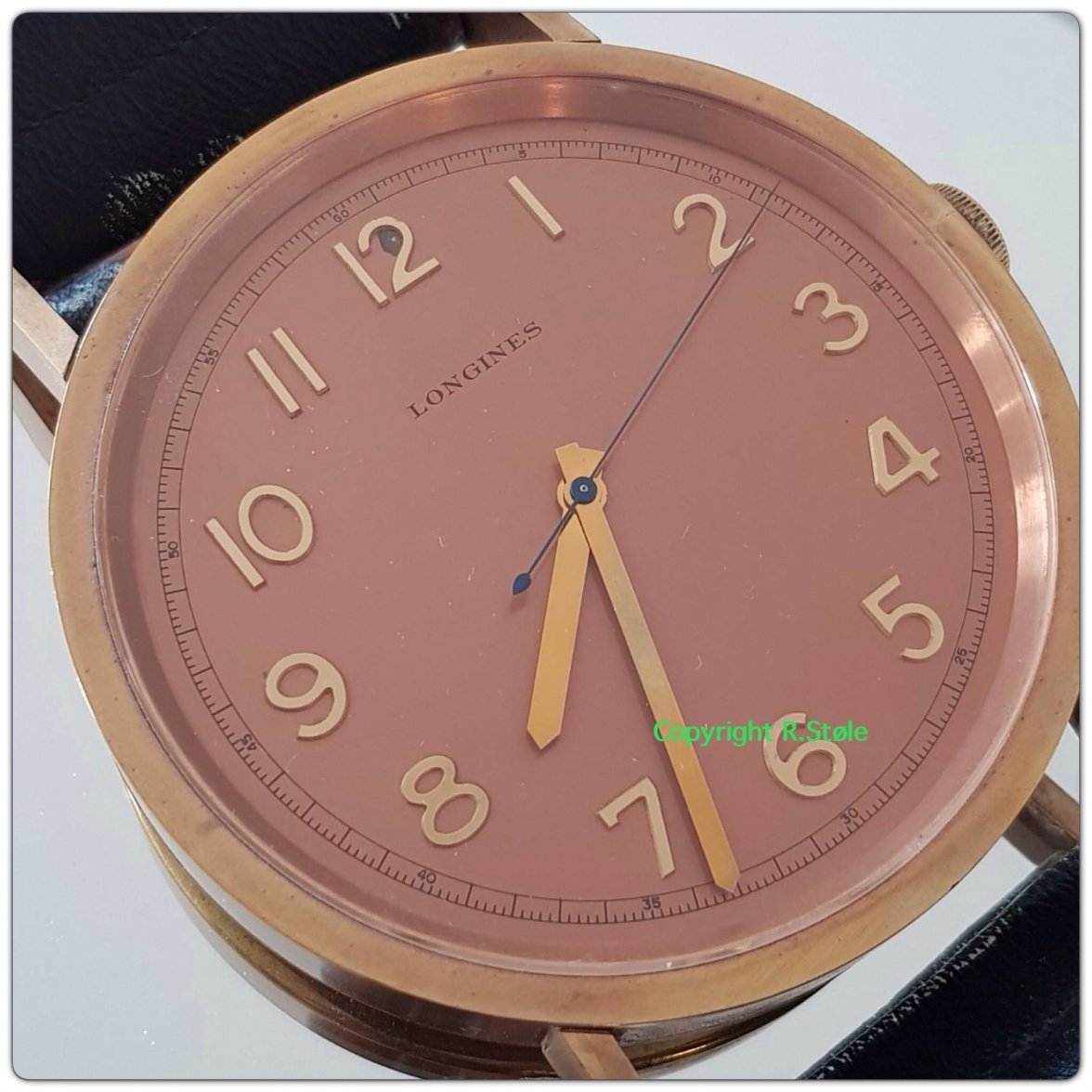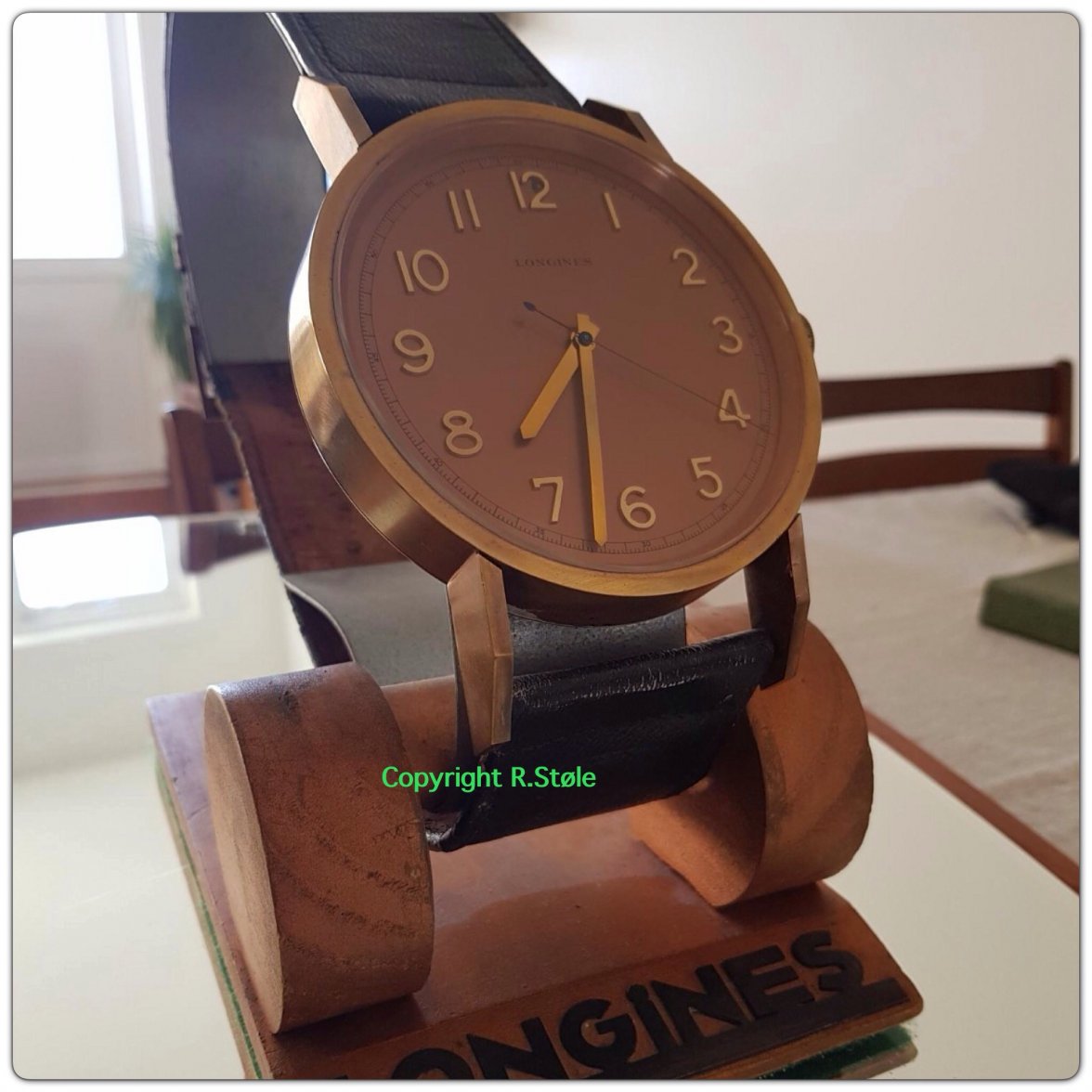Tony C.
··Ωf Jury member
During a period in which the vintage watch market is driven largely by fashion, and nearly everyone has access to electronic devices for accurate time reference, it is easy to forget how important precision timing of mechanical watches was during the post-war era of the 20th century. And it is no coincidence that the same period is widely considered by serious collectors to have been the Golden Age of watchmaking, as remarkable achievements of precision intersected with fine finishing (often done by hand), and classic designs.
Like many 'old-school' collectors, I became interested in chronometres, and their importance in terms of marketing, long ago. I have owned more than a few over the years, some rare, and some not. Most were wristwatches, but a few were pocket watches, deck watches, and special dealer display clocks. I have delved into the differences between various calibers, and researched the Observatory trials for another Longines article that I published some years ago. But it wasn’t until I obtained the subject pocket watch that I peeled back yet another layer, and learned about one of a small number of men who were so instrumental in the success of manufacturers such as Longines – the precision timers.
You Make Your Own Luck
I am a big believer in the above expression, in the sense that one’s actions play a big role in creating opportunities to experience luck. So, within the context of vintage watch collecting, that could mean getting out from behind the computer screen and visiting a local flea market, or pawn shop, or in my case, as I am located in Europe, visiting watch “fairs” on occasion, as there is always the possibility of finding something fresh to market, or unusual.
Not so long ago I was perusing tables at a fair in Switzerland, and a pocket watch caught my eye. This is a bit unusual in itself, as I own very few pocket watches, especially in relation to the number of wristwatches that I own. But in this instance I liked the style of the dial, it was a Longines, and also a center-second variety. The latter is uncommon, as the vast majority of pocket watches utilized sub-second movements and dials.
The dial, while simple, is very attractive to my eye, and some would characterize it as “military style”, or “technical”. The hands are blued steel, and the stainless steel case measures 50mm in diameter.

When I enquired about the watch, the dealer (and watchmaker), who is well-known, and his knowledge highly regarded, became slightly animated, and began to tell me how unusual it was. He spoke briefly about the caliber, which I didn’t immediately recognize, and then added something about someone who had worked at Longines, which, for some reason, I basically ignored.
When he popped open the case I was immediately attracted to the movement design, and it appeared to be in mint condition. My enthusiasm waned briefly after the dealer told me the price that he wanted for the watch, but my resistance wore down over the next hour or so, and I bought it.

An Exclusive Caliber, and a Mystery Unfolds
Upon returning to my home, I began to do some research. The movement is a cal. 37.9 S, and there is surprisingly little related information available online. Note that there are plenty of examples of pocket watches with cal. 37.9 movements, but precious few watches of any kind with the “S” variant. I knew that they had been used in the exclusive, low production series of watches that Longines manufactured for SWISSAIR pilots in the 1950s, but that was about it. So I sent a formal enquiry to Longines about the watch, in hopes that the response would shed further light on the topic.
Jennifer Bochud of Longines’ Heritage department was again invaluable in providing information, and this article could not have been written without her help. However, her initial response was, in one important respect, different from the many that I had previously received from her. She reported that there was no record of the specific watch in the Longines archives, suggesting that it had never been sold! This was a surprise, of course, but I was not discouraged, as there must have been some explanation.
Ms. Bochud further informed me that there was a reference to the movement, "24h en 1 tour”, which means that a 24 hour dial would have normally been used, as they were on the SWISSAIR watches. Furthermore, she mentioned that the previous two serial numbers in the archives both corresponded to SWISSAIR watches.
While the mystery of the origin of my specific watch remained for the moment, I learned more about the 37.9 S caliber, thanks again, in large part, to Ms. Bochud. The caliber was derived from the cal. 37.9, which in turn was derived from the cal. 17.68NZ. All three of those calibers are 37.9mm in diameter, but the 37.9 S, being an indirect central-second variant, is of course thicker. It also has a hacking function, which is consistent with watches used primarily for technical purposes.
More interesting yet, the 37.9 S was apparently used in only three references:
– the Swissair watches, bearing the reference 6630, and produced in 1954
– a version of the iconic Weems, bearing the reference 4356, and produced in 1957
– a pocket watch, bearing the reference 6295, and produced in 1951
***
The SWISSAIR watches are truly extraordinary. There were apparently less than 100 produced, and they measure 47mm excluding the large onion crown. This particular example sold in a PHILLIPS Auction in October of 2017, and brought a final bid of $75,000. Interestingly, the movement is only two digits lower than the one found in the subject pocket watch!


image source: PHILLIPS
Here is an example of the Weems reference, with an enamel dial, sold through the same auction as the above watch, and for $47,000.


image source: PHILLIPS
The serial number of the above Weems movement is quite a bit lower than the SWISSAIR watches, which makes sense given that it was cased and sold at least six years earlier. However, it is also noted as having a cal. 37.9, which is obviously not the same as the much more common, sub-second, pocket watch version. There are a few other references to early Weems with this movement, as well as the exceedingly rare Siderograph wristwatch model, an example of which is shown below.

image source: acollectedman.com
Allow me to veer off, briefly, on a pedantic tangent. Piecing the available information together, I believe that these calibers should be identified as 37.9 N, rather than 37.9. My deduction comes first from an obvious point, which is that it would have been quite odd for Longines to have created a central second variation of the (pocket watch) cal. 37.9, and then use exactly the same designation. A further clue, which I happened to stumble across while researching this article, was provided by Ms. Bochud’s predecessor at Longines, Raymond Krebs, who wrote the following in response to an otherwise unrelated enquiry back in 2005:
It does not exist a special method and I do not have an exact explanation. But I can give you some examples:
30CH for chronograph - 30 L for small second - 30 LS for sweep second - 37.9 ABC for thinner, abaissé in French (ABC), 19 A for automatic, 37.9 N for New execution - 19 ASD for Automatic Sweep second Date
What I am inclined to infer from this is that the 37.9 N was a “new execution” of the (sub-second) 37.9, and was used in the Siderograph, as well as some of the early Lindbergh Angle Hour watches. I say “some” because the very first version was apparently powered by a rather different caliber, the 18.69N. Here is an example:

To be clear, I do believe that Longines has “37.9” noted in the archives relating to some of these early, specialized pilot’s watches. But I have now found confirmation from Longines, courtesy of Ms. Bochud, and from the company's own literature, that in 1940, the cal. 37.9 N was developed "based on the construction from principles applied for the 37.96 , it was a variant with centre seconds. This modification required components that were specifically adapted to the centre seconds mechanism (upper third wheel bush, upper contrite wheel bush, lower contrate wheel bush, jewelled plate, plate screw, intermediate wheel with cannon-pinion, third wheel, contrate wheel, cannon-pinion, friction-spring screw, friction-spring, cannon-wheel, centre axis7) and led to slight structural modifications, notably through the addition of a bridge that was screwed on to the barrel bridge."
I believe that it is also reasonable to infer that the 37.9 S, used in the later references, was a hacking version of the same 37.9 N, and that the “S” may well have been used to designate that “stop-second” function.
As rare as the two wristwatch references powered by the cal. 37.9 S appear to be, the pocket watch reference seems to be even more elusive. Which bring me back to the mystery of the origin of the subject watch. As I began to think about how such a watch could have appeared without ever having been sold, I remembered the original reference made by the dealer, that I had ignored at the time. So I contacted him, and the information that he provided solved the mystery, and also paved the way to a deeper appreciation of the “precision timers” referenced in the title, and at the beginning of the article.
Frank Vaucher, Longines’ Prince of Precision

image source: cejar.ch
The dealer told me that he had purchased the watch from the estate of Frank Vaucher, shown above at his bench, and that he had been a very important and successful precision timer for Longines. As further research soon revealed, he wasn’t exaggerating.
In an extensive article published in the Swiss Journal L’Impartial (30 November, 2002, pp 61-70), entitled At the Time of the Princes of the Precision, Françoise Kuenzi wrote the following (mostly machine translated):

The best chronométriers await the proclamation of the results. From left to right: Joseph Ory (Omega), Robert Chopard, Fernand Wenger, Frank Vaucher (all three at Longines) and André Brielmann (Omega).
Swiss watchmakers are the best in the world. Without doubt. Yet it must be proven. In the middle of the nineteenth century, in the face of the rise in power of other nations for the watchmaking industry, such as France and England, or even the United States, manufacturers of the sweet Helvétie have had, for the first time in their history, to begin to produce advertising. To show the world that they were the strongest, the most precise, the most qualified. How? Brandishing a medal, in the manner of the champions, in the form of a diploma obtained after fact go to the movement a whole series of tests, in various positions and extreme temperatures.
Kuenzi goes on to summarize the early history of such contests:
It all began in Geneva in 1790 already: chronometric tests were organized by the Society of Arts, while the first real competition was established in 1816. One named Antoine Favan was the first winner. It was then a question of presenting a watch whose variations would not go beyond 3 seconds by 24 hours, that it was posed flat, hung or worn and that it is observed in a temperature which travels 25 degrees on the Réaumur scale, René Gygax, former precision timer at Zenith, was quoted in a pamphlet written in 1993.
In Neuchâtel, it was not until 1860, the date of the creation of the Observatory, that the race for precision began. From the very beginning, the institute was responsible for determining the exact time and transmitting it. The institute also had the task of observing chronometers and recording their performances on newsletters. Six marine chronometers and thirteen pocket watches were subjected, in the first year, to severe control. Already in 1861, among the manufacturers, the name of Ulysse Nardin…
Fast forward to the 20th century, and Kuenzi continues:
This race against the clock lasted more than a century. The chronométriers, precision adjusters, were the champions of the watchmaking factories, cross-country runners who spent several months bending over their workbench, adjusting the balance wheel and hairspring, controlling, adjusting, before delivering their parts to the Observatory; in Switzerland, those of Neuchâtel and Geneva had organized these competitions. It was then the long wait, which lasted 45 days - the tests were longer than those of the official control offices, ancestors of the COSC - and which, sometimes, devoted the work of the masters of the setting. These were only a handful. They knew each other and respected each other, but no one exchanged their little secrets, which were the subject of much speculation. The last generation of these tenors is now retired. Frank Vaucher, a former timer at Longines in Saint-Imier, recently drew up a list of his former colleagues. In the Jura Arc, they are 18, domiciled between Le Locle and Bienne. They met on October 9 to exchange memories and comment on the latest news from the industry.
A small number of companies shared the podiums. Participating in the competitions was relatively expensive: not all manufacturers could afford a full-time team to set the competition pieces. Ulysse Nardin, Zenith, Omega and Longines were the four big competitors. Brands like Movado, Solvil, and even the Technicum of La Chaux-de-Fonds were also on the list. Four categories welcomed the movements: chronometer of marine, edge, pocket, and chronometer-bracelet. The first wristwatch was filed in 1914 by a certain… Rolex. But the small calibres only took off much later, in the forties and fifties. In 1967, out of 1700 pieces entered, 1200 were wristwatches.
True stars of factories, timekeepers had little free time, however: on Sunday morning, they had to return to the factory to put their pieces together. But at 9:30 I was already in church, remembers Frank Vaucher. And we could never go away on a weekend, adds his wife.
Above all, the adjusters had to report prizes, to make records, so that the name of the company shined in the world. Since the fifties, competitions had become a real marketing tool. A growing number of buyers wanted the award-winning movements.
At first artisanal, the control techniques were perfected within the companies. Thus, the cooler, one of the three main attributes of the chronométrier, was sometimes... the cold room of the village butchery, made available to a manufacturer, where quarters of meat and chronometers shared the space! At the Observatory, temperatures and atmospheric pressure were increasingly stabilized.
Until 1960, the reference time, given by a regulator, was still determined astronomically, by observing the position of the passage of the stars to the meridian. Atomic clocks and their frequency standards only later took over...
French speakers can read the full article here: http://doc.rero.ch/record/114843?ln=frl
Some examples of Vaucher's (and Wenger's) successes, in this case with the cal. 30B:

The Management Told Us: It is Very Nice, a Prize, But We Need Records!
Kuenzi was also responsible for an interesting interview with Vaucher, whose comments are italicized:
"I had entered the Longines to stay one winter, and I stayed 46 years and two days…
"Precision tuner, "prince" of watchmaking, as we called in manufactures these men who spent months, looking at balance-wheels and hairsprings, to approach perfection, Frank Vaucher is nonetheless modest. He prefers to evoke, with a smile, the successes of others. His? They are nevertheless numerous: the citizen of Cormoret appears as early as the end of the fifties in the first places of the competitions of the Observatory of Neuchâtel, accumulating some 25 series prizes, the most prestigious, between 1956 and 1967. But more than the prizes, it was the records that counted, remembers the watchmaker. The management told us: it is very nice, a prize, but we need records!
"Precision tuning, Frank Vaucher came through timing. It must be remembered that Longines was timing a large number of events in Switzerland and around the world. Also, the precision adjusters were primarily responsible for controlling the chronometers lent every weekend for sports events and returning to Saint-Imier on Monday. They had to be prepared for the next competition. The team of precision adjusters - then composed of Robert Chopard and Fernand Wenger, two adjusters at the top of their craft - could no longer assume, in addition to this task, that of preparing pieces for the competitions of the Observatory. Frank Vaucher then joined the Longines shock duo, and that's how I got into the fine tuning.
"The competitions, Longines participated above all to prove the reliability of the parts used during competitions and scientific expeditions. The commercial interest gained importance over the years. At the Squaw Valley Winter Olympics in 1960, we had to supply 120 chronometers that had passed the Observatory competition. The organizers could not have been satisfied with the newsletter of a control office? It was out of the question: they wanted the newsletter of the Observatory, and not another ...
"But the end of the end, in the field, was the wristwatch. In the thirties, manufacturers launched the first models, and the commercial boom was rapid. After the Second World War, the Observatory commission added a category to these small calibres, whose accuracy was worse than the pocket chronometers, but which were much more popular. And they were always smaller, which cost Longines the first places, remembers Frank Vaucher. We had a good 34mm caliber, but when we had to go down to 30mm, it was more difficult."
[I’d like to interject that Vaucher’s insights dovetail very nicely with the previous Longines article that I published. In that chronometre-centric piece, I noted how Longines had dominated the Neuchâtel Observatory trials with their large, 34mm movements during the 1940s, but then suddenly dropped from contention when, In 1948, the Swiss Observatories imposed a new limit of 30mm in the wrist chronometer category. Readers interested in further detail can find the previous article here: https://omegaforums.net/threads/lady-luck-delivers-an-early-longines-chronometre.11157/ ]
Kuenzi’s interview with Vaucher continues:
"Competitors were not numerous: thirty precision adjusters, attached to a handful of companies, shared the classification. We were competitors, and there was some enmity between us, but we were also friends. Charles Thomann, in his book "The dignitaries of watchmaking", perfectly knew how to revive the atmosphere that prevailed during the competitions of the Observatory. Or rather, during the announcement of the results, which was held every year at the Château de Neuchâtel in mid-February. You had to see the constipated faces of the adjusters, laughs Frank Vaucher showing a picture of austere gentlemen in costume installed in the hall of the Cantonal Court. Because if we knew our own results, we did not know anything about the performance of other timer. The battles, then, were noble: I had once deposited a [movement] in Geneva. Seeing that I was trying to beat him on his own ground, Vacheron timer Urbain Brahier decided to do the same in Neuchâtel. I got 2.71, him 2.70. At the proclamation of the results, in the hall, I heard a big "Ohhhh!"
The year 1968 and the advent of the quartz watch sounded the death knell of the Observatory's competitions. Frank Vaucher has no regrets: Even when Longines has ceased to be a factory, I have always been offered varied and interesting work."
For French speakers, here is a link to the original language interview:
https://www.iro.umontreal.ca/~vaucher/Genealogy/Documents/FrankVaucher.html
***
As suggested above, Voucher compiled an extremely impressive record while working for Longines. In fact, "between 1955 and 1969, he obtained more than 250 awards and records from Neuchâtel Observatory for the watches he timed. In 1966, he even set a 'world record' with a mark of 1.72 in the category of pocket chronometers, which remains unbeaten to this day [in 2014, when the source material was published]."
In 1972, when the Quartz revolution had rendered the precision timers irrelevant, Vaucher "took up a research role at Longines and moved subsequently to Special Fittings, before finally joining the firm’s Design department." He also became involved in developing some novel solutions for Longines, and was awarded several patents. Here is one interesting example:
When the flyback chronograph ref. 260 first appeared in 1957, the dial carried 600 separate divisions to time an interval of 1/10th of a second and obviously, this wasn’t ideal from a user friendliness standpoint, more importantly, a 36,000 vph in the 1950s was a heck of a complicated watch, so much so that third party repairs and servicing were suspended for technical and practical reasons. So, Frank Vaucher, a precision timer at Longines, decided that he had a two part problem to solve – readability and engineering.
In terms of engineering, Vaucher simply used a different coupling system and a 60-seconds driving wheel rather than a 30-seconds driving wheel found in the calibre 260. In terms of user friendliness, Vaucher discovered that using a seconds hand with a comb of nine “teeth” rather than the traditional arrow pointer meant that when the flyback hand was paused, one of the “teeth” (with corresponding numeral) would stop exactly with one of the second markers around the dial, this made reading tenths of a second easier and it was widely implemented to other Longines chronometers.
and an image of the first page of one of Vaucher’s patents:

Vaucher certainly had the pedigree to be mechanically inclined, as the history behind the current Vaucher Manufacture Fleurier attests. You can delve into his interesting family background in this pdf file:
http://www.vauchermanufacture.ch/uploads/VM_FICHE_HISTORIQUE_EN.pdf
Another interesting footnote is that Vaucher's family bequeathed his archives to the Jura Archive and Economic Research Centre (CEJARE) in Saint-Imier. I sourced some details quoted above from this material, and you can learn more about it here:
http://www.fhs.swiss/eng/2014_11_27_chronometrier_cejare.html
***
Well, we are nearing the end of this rather long, meandering, but I hope at least somewhat interesting path down which the subject pocket watch has taken me, and now you. So here, in summary, are my conclusions.
The cal. 37.9 S was clearly an extremely low production caliber. It was reserved for technical watches, and primarily designed for use by pilots. Very few such watches have appeared in the marketplace, and they are obviously valued highly by collectors. The caliber, along with its very similar predecessor, the 37.9 N, are among Longines' most important, as, coupled with their exclusivity, they tie together at least several of the manufacturer's most iconic, specialized watches, including the Lindbergh Hour Angle, Siderograph, oversized Weems, and SWISSAIR series.
I have no doubt that the subject pocket watch was, in fact, owned by Frank Vaucher, as its provenance has no gaps, and the evidence is fully supportive. I would venture to speculate, though, that he built the watch simply for his own pleasure and personal use, and not as some form of prototype or formal project. It is truly a unique watch, with a very close connection to a particularly important member of the Longines family.
Finally, and most importantly, the whole experience reaffirms yet again just how interesting and exciting vintage watch collecting can be, given just a touch of luck!
Edited:
